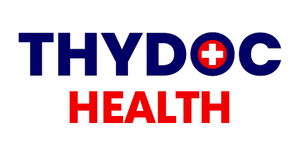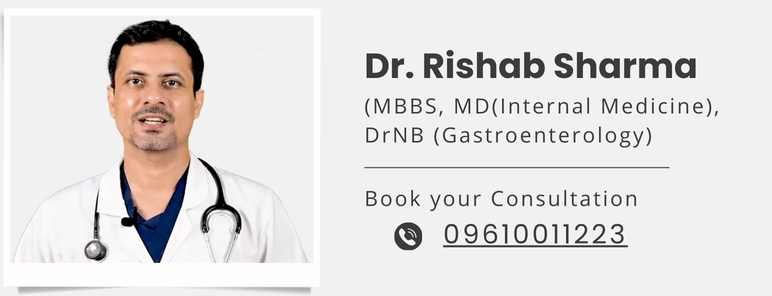By Dr. Rishab Sharma, MBBS, MD (Internal Medicine), DrNB (Gastroenterology)
The liver is a remarkable organ that performs hundreds of vital functions, including processing nutrients, filtering toxins, and producing bile to aid digestion.
However, when excess fat accumulates in the liver, it disrupts these functions and leads to fatty liver disease.
Fatty liver disease is often silent in its early stages, showing little to no symptoms. However, as it progresses, it can cause severe liver damage, potentially leading to life-threatening complications. This progression happens in distinct stages, starting from a relatively harmless condition called steatosis and advancing to cirrhosis, the most severe form.
In this blog, we’ll explore each stage of fatty liver disease in detail, helping you understand how the condition develops, the risks it poses, and why early detection is so important.
What is Fatty Liver Disease?
Fatty liver disease occurs when the liver starts storing excess fat. Normally, the liver contains a small amount of fat, which doesn’t affect its functions. But when fat makes up more than 5–10% of the liver’s weight, it begins to interfere with its ability to work efficiently.
There are two main types of fatty liver disease:
- Non-Alcoholic Fatty Liver Disease (NAFLD): Occurs in people who drink little to no alcohol.
- Alcoholic Fatty Liver Disease (AFLD): Caused by excessive alcohol consumption.
We have discussed the difference between Non-Alcoholic Fatty Liver Disease and Alcoholic Fatty Liver Disease in detail in our another blog, here is the link –
Now, let’s talk about the different Stages of Fatty Liver Diseases.
Stage 1: Steatosis (Simple Fatty Liver)
The first stage of fatty liver disease is known as steatosis, or simple fatty liver. This is where the condition begins, and fat starts accumulating in the liver cells.
In this stage, the liver still functions normally despite the fat buildup. Most people don’t experience any noticeable symptoms, which makes it difficult to diagnose. Steatosis is often discovered incidentally during imaging tests, such as ultrasounds or CT scans, performed for unrelated reasons.
Why Does It Happen?
Steatosis can be caused by various factors, including:
- An unhealthy diet high in fats and sugars.
- Lack of physical activity.
- Diabetes
- Obesity or being overweight.
- Alcohol consumption (in the case of AFLD).
- Certain medications, such as corticosteroids or chemotherapy drugs.
What Happens to the Liver?
At this stage, the liver begins storing excess fat in its cells. The fat doesn’t cause inflammation or significant damage yet, but it sets the stage for potential complications if left unchecked.
Can It Be Reversed?
Yes, steatosis is reversible with lifestyle changes. A healthy diet, regular exercise, and avoiding alcohol can help the liver shed the excess fat and return to normal.
Stage 2: Non-Alcoholic Steatohepatitis (NASH)
If the excess fat in the liver isn’t addressed, it can lead to inflammation, a condition called non-alcoholic steatohepatitis (NASH). This is a more advanced stage where fat triggers an inflammatory response in the liver, causing damage to liver cells.
What Happens to the Liver?
In this stage, the liver’s immune system starts attacking the fat deposits, leading to inflammation and liver cell damage. Unlike steatosis, NASH isn’t harmless. The inflammation can cause scarring, which is the liver’s way of repairing itself. However, this scarring can worsen over time, leading to fibrosis.
People with NASH are at a much higher risk of progressing to advanced stages of liver disease.
Why Does NASH Occur?
NASH is often linked to:
- Obesity
- Insulin resistance or type 2 diabetes
- High cholesterol or triglycerides
- Metabolic syndrome
Symptoms of NASH
NASH may start showing mild symptoms, including:
- Fatigue and low energy levels.
- Mild pain or discomfort in the upper right side of the abdomen.
- Unexplained weight loss in some cases.
Can It Be Treated?
Yes, NASH can be managed if detected early. Lifestyle changes, such as maintaining a healthy weight, eating a balanced diet, exercise, avoiding alcohol and managing underlying conditions like diabetes, are key to reducing inflammation. Also some medicines can also be prescribed.
Stage 3: Fibrosis
Fibrosis is the third stage of fatty liver disease, where prolonged inflammation causes scarring in the liver. The scar tissue replaces healthy liver cells and begins to interfere with the liver’s blood flow and normal functions.
What Happens to the Liver?
When the liver is inflamed for a long time, it tries to repair itself by forming scar tissue. While the liver can still function at this stage, the damage makes it less efficient. Scar tissue can also restrict blood flow, further straining the liver.
Unlike the earlier stages, fibrosis cannot be completely reversed. However, its progression can be slowed or halted with proper treatment.
Symptoms of Fibrosis
- Swelling in the legs or abdomen (caused by fluid retention).
- Jaundice (yellowing of the skin and eyes).
- Dark urine and pale stools.
- Increased fatigue and weakness.
Why Does Fibrosis Occur?
Fibrosis occurs when NASH or alcoholic liver disease is left untreated, allowing inflammation and cell damage to continue unchecked.
Can It Be Managed?
While the scarring from fibrosis cannot be removed, further damage can be prevented through:
- Complete abstinence from alcohol (in AFLD).
- Managing underlying conditions like diabetes or high cholesterol.
- Regular monitoring and medical care.
- Some medicines can also help.
Stage 4: Cirrhosis
Cirrhosis is the final and most severe stage of fatty liver disease. At this point, the liver is heavily scarred, and its ability to function is significantly compromised.
What Happens to the Liver?
In cirrhosis, scar tissue replaces almost all healthy liver tissue. The liver becomes hard and shrunken, losing its ability to filter toxins, produce bile, and regulate nutrients. Blood flow through the liver is severely restricted, leading to complications throughout the body.
Symptoms of Cirrhosis
- Severe fatigue and muscle weakness.
- Jaundice and itchy skin.
- Swelling in the abdomen (ascites) and legs (edema).
- Confusion or memory problems (hepatic encephalopathy).
- Vomiting blood or passing blood in stools (due to ruptured blood vessels).
Complications of Cirrhosis
- Liver failure: The liver stops working entirely.
- Liver cancer: People with cirrhosis are at a much higher risk of developing liver cancer.
Can Cirrhosis Be Treated?
Cirrhosis cannot be reversed, but its progression can be slowed and it’s related complications are managed. Advanced cases often require a liver transplant to save the patient’s life.
Why Early Detection is Crucial
Fatty liver disease progresses slowly, often taking years or even decades to reach advanced stages. The earlier it is detected, the better the chances of reversing or managing the condition. Regular health checkups, liver function tests, and imaging can help identify fatty liver in its earliest stages.
How to Protect Your Liver
- Maintain a Healthy Weight: Obesity is a major risk factor for fatty liver disease.
- Follow a Balanced Diet: Eat more fruits, vegetables, and whole grains while avoiding processed and fatty foods.
- Exercise Regularly: Aim for at least 30 minutes of physical activity 5 days a week.
- Avoid Alcohol: Even moderate drinking can worsen liver damage.
- Manage Chronic Conditions: Control diabetes, cholesterol, and blood pressure.
- Regular Screenings: Schedule regular checkups with a gastroenterologist to monitor liver health.
We have discussed in detail “How we can protect our liver from any Liver disease” in our other blog, here is the link –
Final Thoughts
Fatty liver disease doesn’t have to be a silent threat. By understanding its stages—steatosis, NASH, fibrosis, and cirrhosis—you can take proactive steps to protect your liver and overall health.
If you suspect you have fatty liver disease or are experiencing symptoms like fatigue, abdominal pain, or jaundice, don’t wait. Consult Dr. Rishab Sharma, a leading gastroenterologist in Jaipur, for expert diagnosis and care.
Your liver works hard for you—take care of it before it’s too late!

